|
Okinawa Trip 2010
|
When my daughters were much younger, I made a promise to them that when they reached a certain age that I would take them to Okinawa and learn about first-hand what they have heard about for so many years. My wife and I took our daughters and a group of middle school/high school students with their parent chaperones for our yearly trip to train on the island and learn about the wonderful people of Okinawa. Joe Wilson, one of my senior students, comes with me every year and has my eternal thanks for driving the van filled with kids and for his dedication to the dojo and the Butokukan.
My daughters and I flew to Chicago the night before our flight to Japan so that there would be no possible problems with flight delays that would prevent us from arriving on time to Okinawa. Lorie and the rest flew to Korea first in order to save some money since there were a couple families of three traveling on this journey.
|
 |
|
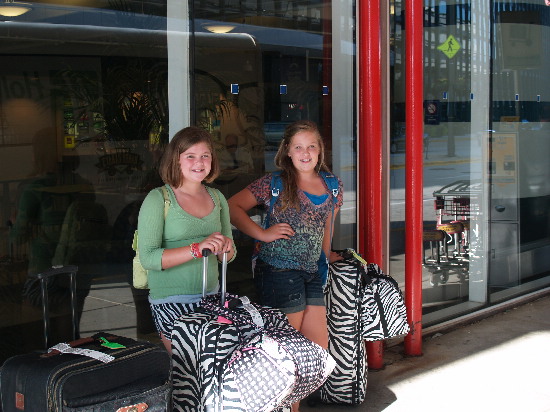 |
 |
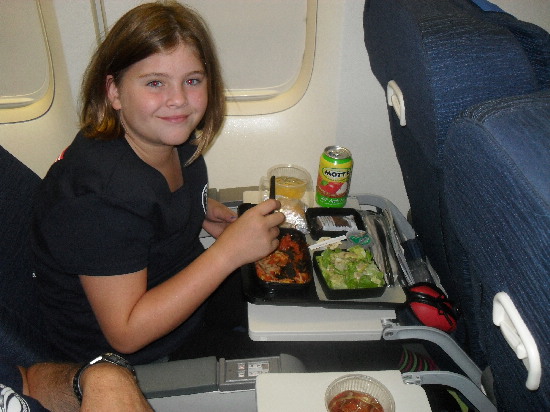 |
|
Sunday July 11-We took off from Chicago on the usual route to Narita and with no arguing over the window seat. The meals on this flight were much better than the last trip and the girls seem to enjoy them.
After about an hour of total sleep, we arrived in the typical drizzly weather for Narita this time of year and got caught in one of the biggest immigration lines I have ever experienced. It probably took close to an hour for us to reach the immigration desk and the airport people were not very sympathetic to a few people who were going to miss their flight because of this.
We finally met up with Joe, got changed out of our travel clothes and drank as many bottles of Pocari Sweat as we could.(It is a great tasting type of Gatorade in Japan)
|
 |
|
|
|
We slept the entire way to Naha and we greeted by Gibu Sensei, members of the Butokukai and the rest of our crew who arrived earlier that day. We all caught up quickly and then loaded the bus for the Deigo Hotel.
After getting things settled in our rooms, a few of us headed for the Lemon Grass izakaiya with Izumi Sensei. It was nice to see the Kyan’s again and they made sure to keep our stomach’s happy throughout dinner. They had some freshly caught fish and we had our usual fill of tebichi and goya champaru. We were all surprised to see that the Kyan’s had put up and article about our student Eric Garcia that had appeared in Virginia Living Magazine.
|
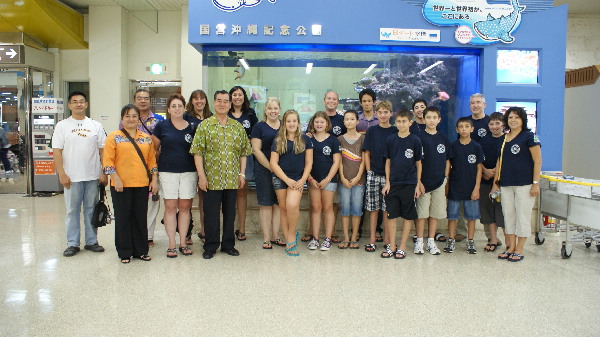 |
|
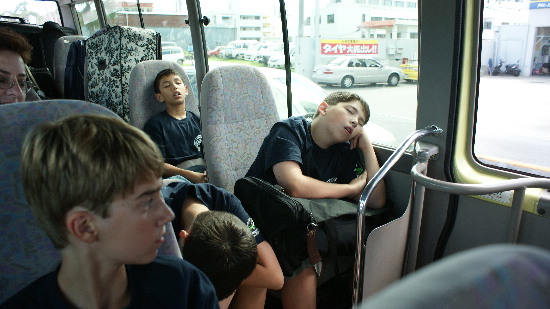 |
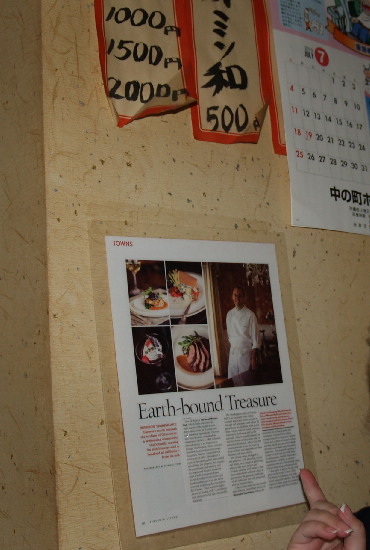 |
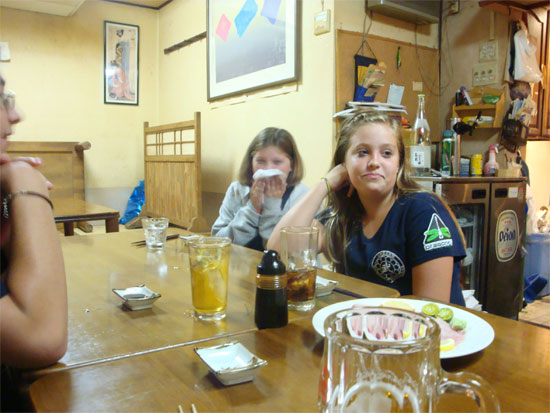 |
|
Monday July 12
I woke up early, as usual, on Virginia time and went up to the ofuro for a traditional Japanese bath. After breakfast, I took our Dojo moms to the bank and got our money exchanged which is always a huge problem because it takes so long. We usually exchange our money at the airport in Narita but since our flight schedules were a little rushed this year, we were stuck at the bank. Our first stop was, no surprise, Shureido. We always try to do this so that the orders are finished by the time we leave the island and since everyone was getting a gi, this was a necessary stop. The staff was helpful as usual and after about and hour and ½, we decided head to the Harborview restaurant to give our travelers a neat lunch experience.
|
 |
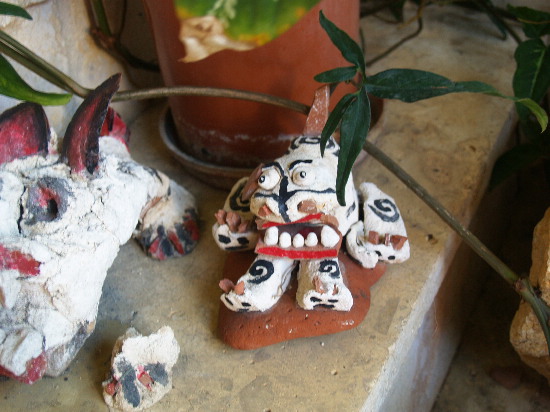 |
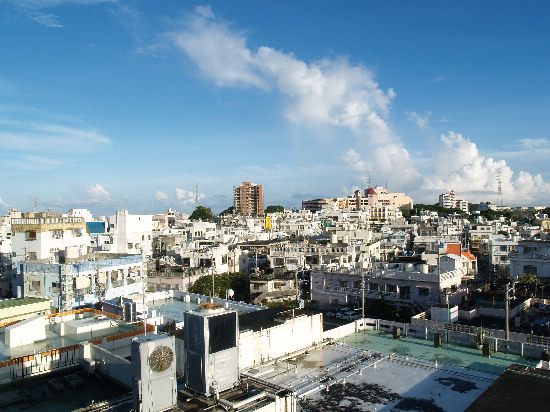 |
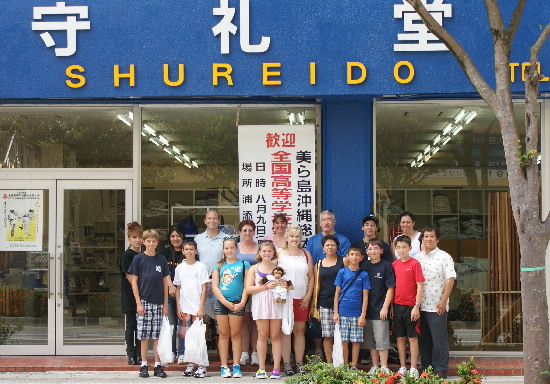 |
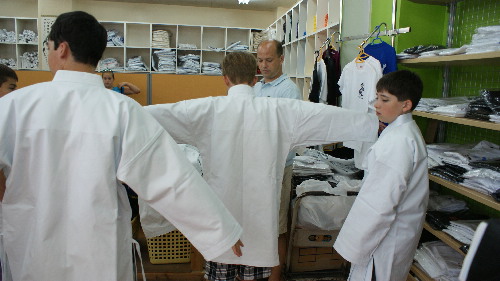 |
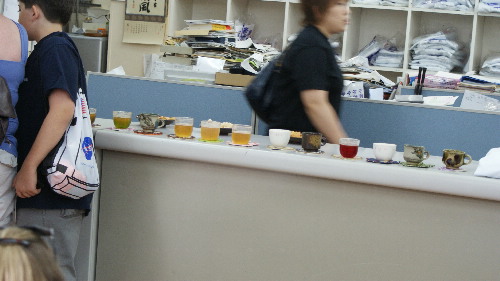 |
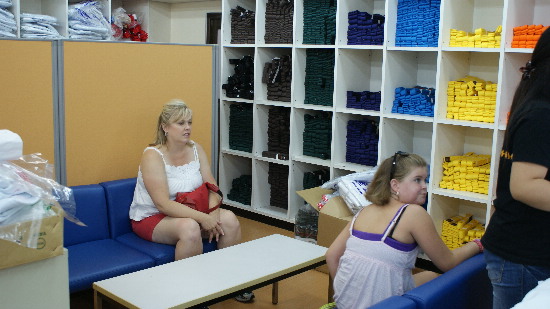 |
| The food at the restaurant was average at best but they did have a nice salad bar with fresh goya and seaweed. From the road, the dining experience seems like it would be unique but the food at lunchtime was extremely limited and not tourist friendly (for those who are bringing first-timers over). I have had decent dinners there but again, it is strictly Okinawan cuisine. Izumi Sensei, always the prankster, let me look for my sandals for about 5 minutes in the shoe rack until I finally realized he has stolen them and was wearing them around the salad bar. We scrapped Shuri Castle since we were concerned about getting to the Hombu on time and it was the first training session of the trip. We also needed to stop by the Hyaku-en store to get wrapping paper and bags for the gifts we had brought. |
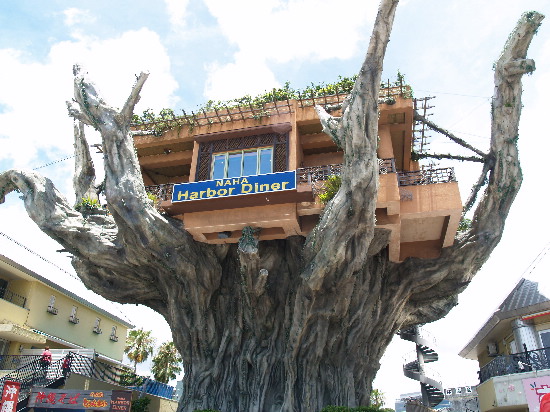 |
|
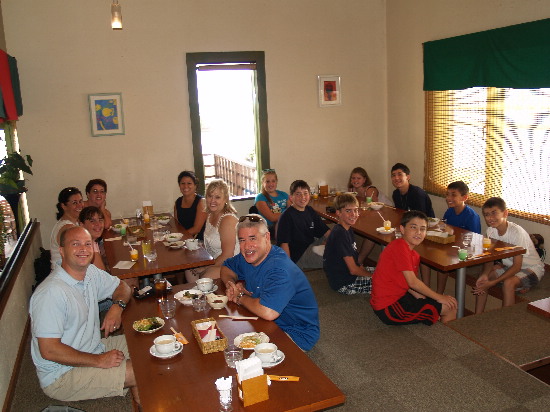 |
|
When we arrived at the Hombu dojo, our exchange student Rio Yamazato and her family were waiting for us. It was very fortunate that we happened to be on Okinawa before she was to come to the states so that we could meet her as well as her parents. After introductions and a brief conversation, we ran into the dojo to begin the night’s keiko. We started out by presenting the gifts that we had brought and made formal introductions (although everyone had met Gibu Sensei when he was in Williamsburg last year). Baseball season and school exams were both in full swing so there were not many kids attending class.
|
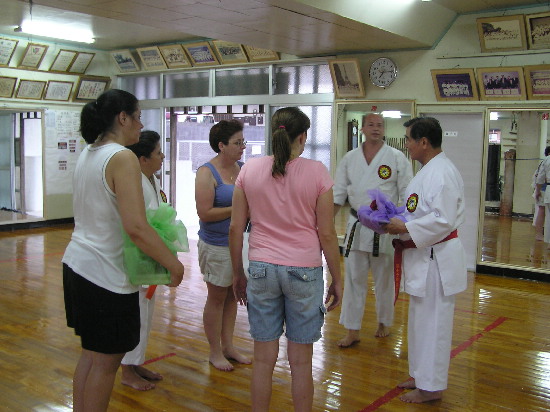 |
| I presented Gibu Sensei with a kanban from our dojo that I had brushed with his favorite saying-"Jin sei wo jin no tame nari"-Live your life for other people . The wood was made from Osage Orange which my student Dave Williams is using for his kobudo company. |
 |
|
|
|
Gibu Sensei started out the first training session with all of the bo kata, sai kata and then empty hand kata-naihanchi through gojushiho. I was very proud of everyone’s efforts despite the jet lag tapping everyone on the shoulder. It was interesting to see the re- introduction of Sakugawa dai ni(Nakazato no Sakugawa no kun) and after two times, I was able to remember the pattern since I hadn’t practiced it since leaving the Shorinkan five years ago.
Kobudo kata in curriculum order per weapon:
Shushi no kun, Kubo no kun, Sakugawa no kun, Sakugawa dai ni, Tunfa no kata, Nunchaku ichi no kata, Nunchaku ni no kata, Sai ichi no kata, Sai ni no kata, Sai san no kata, Eku no kata, Kama no kata
|

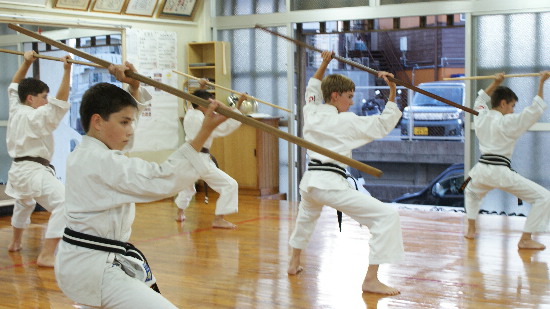 |
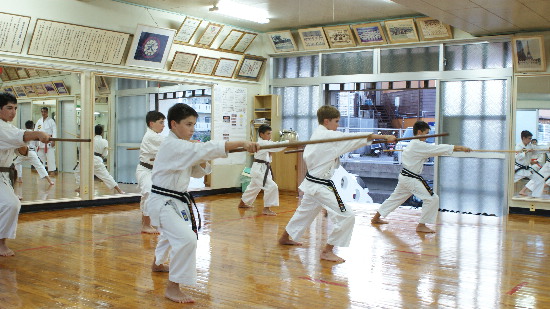 |
|
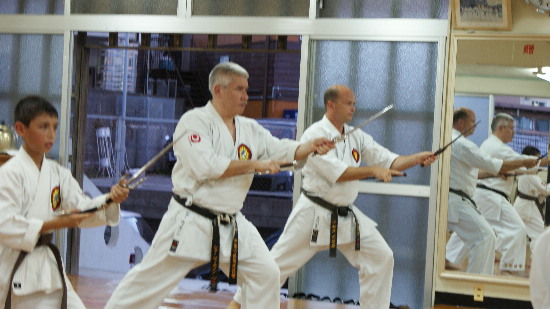 |
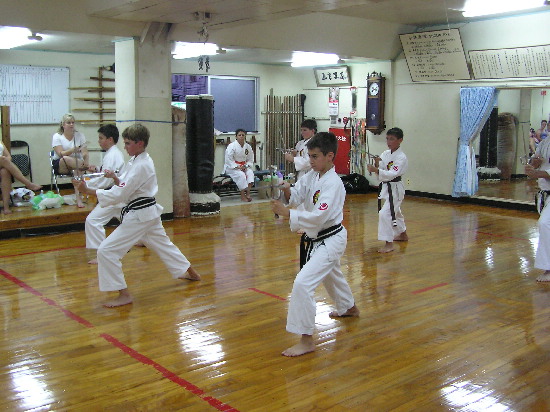 |
| We next went through all of the kata of the curriculum starting with the kihon/fukyu sets and then finishing with gojushiho. Always typical of the first training session of the trip, the coverage of the kata curriculum is not only to check everyone's form and test one's spirit but to also to assist with getting the blood moving from travel.
It was a privelege to run the higher kata with Gibu Makoto Sensei and most rewarding was the feeling that Joe and I were moving as one unit with him. Now, don't get me wrong. His karate is far above ours but it was very satisifying to move together with the same spirit and timing. I haven't felt that in a while and it was one of those moments that, despite the heat and jetlag, you smiled at the end of each kata. Maybe as musician, it is the first time the garage band feels it is not a garage band anymore and the playing as a unit becomes something more. (In this case, our garage band had Eddie Van Halen as our guitar player and Joe and I were the backup musicians).
|
|
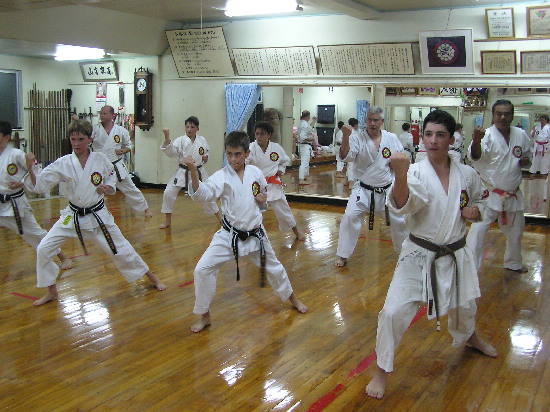 |
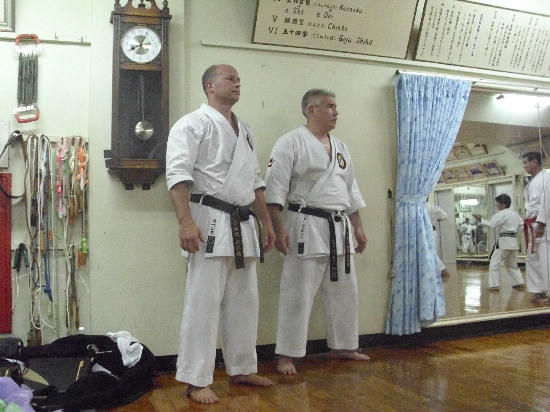 |
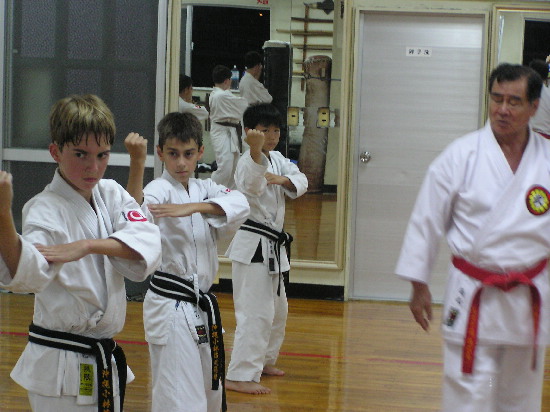 |
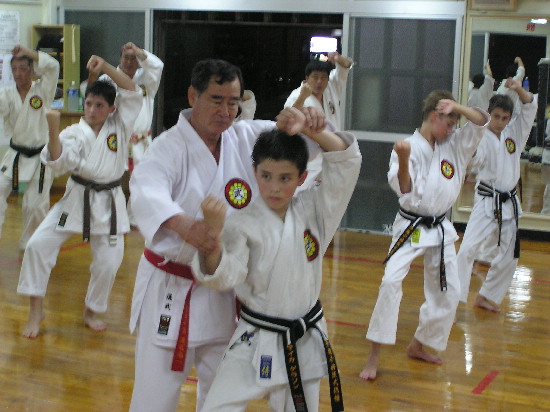 |
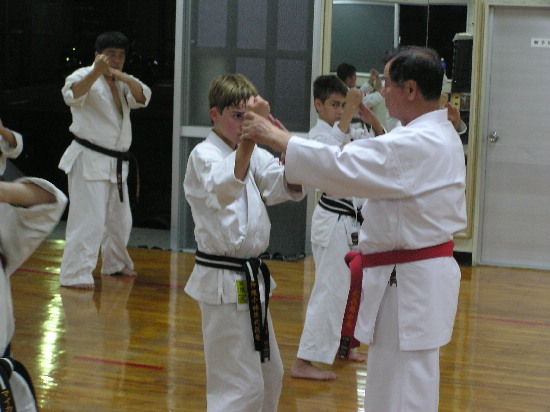 |
 |
 |
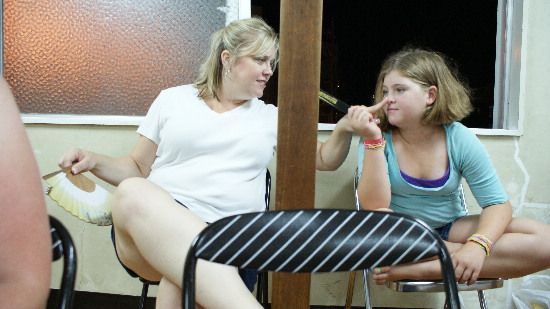 |
|
|
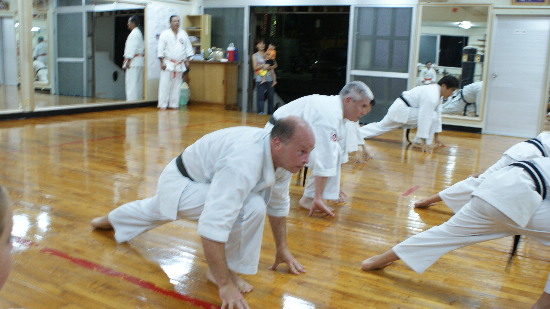 |
|
|
After training, Gibu Sensei took us and the Okinawa yudansha out to eat at a local buffet restaurant which had a wonderful selection of traditional Okinawan food and desserts that the kids loved. Kiyuna Sensei gave Joe and I a lift to the hombu to get our cars so no one had to walk back and there was the first of many funny incidents of the trip. We lost Kiyuna sensei down the street after he made a light and we didn’t so I hopped out to see if Joe saw which direction he went.
In the midst of crazy traffic and the kamikaze motorcyclists, I ran back to the car-only to get in on the normal US driving side! (I even got my seatbeat buckled before I realized what had happened.) Yes, yes, oh readers, enjoy this moment of laughter. Jet lag can make you do funny things ladies and gentlemen and this one goes down in the Okinawa trip history books. We backtracked our way from the hombu, picked everyone up and headed to the hotel.
|
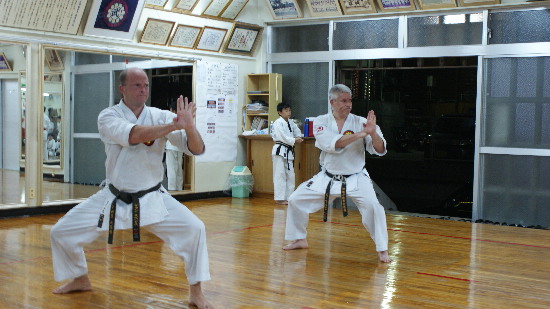 |
|
Tuesday July 13
I woke up early and walked around taking pictures from the roof and local fauna from around the neighborhood. I took the first few families to White River Photo Studio to begin their photo sessions with Izumi Sensei. Izumi Sensei and I looked on his new computer at our homes on Google Earth. Joe, Lorie, the girls and I walked down to Gate 2 street and looked in the various shops. We went into Ippon-Do, a martial arts and souvenir store where the girls bought shisa and I was able to talk with owners again who we visit on every trip. We ventured back near the hotel and tried to have lunch at Mickey’s.(a great lunch stop that accepts dollars and yen) but it was closed. We found a perfect Okinawa soba shop and were able to sit outside and enjoy this wonderful dish. Okinawa soba is perfect for the traveling karateka because it is very inexpensive and will fill you up. We notice a bucket that was filled with rocks and collecting the dripping water from the a/c unit. It is amazing how the Okinawans never waste anything and were saving this water to be used in cleaning the outside walk or the tables.
|
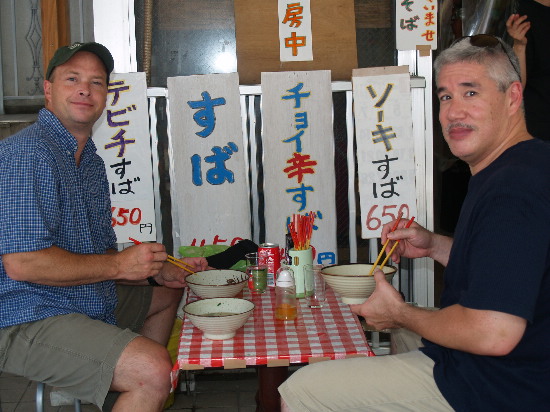 |
|
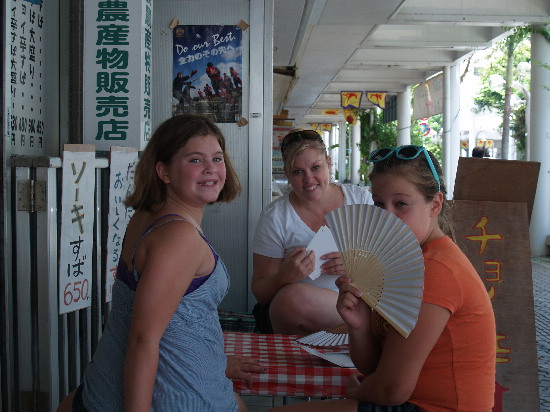 |
| The kids on the trip were becoming increasingly loud and hyper so I packed them all in the car, gave the adults a break and took them to the public park in Koza where there are many exercise stations and playgrounds for kids. In the states, the liability of having such a place would be incredible which is a shame because it is a dreamland for kids. We made it back and had a little time before going to the hombu dojo for kumite night. |
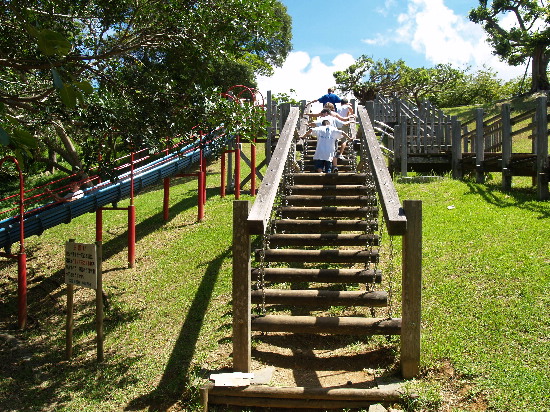 |
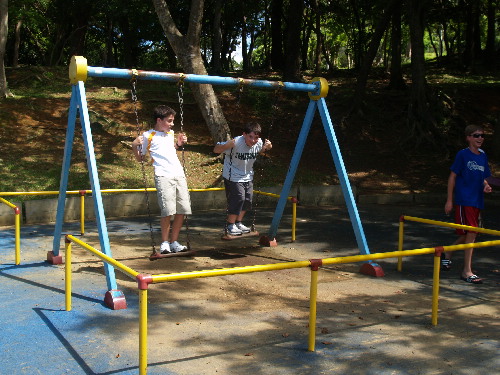 |
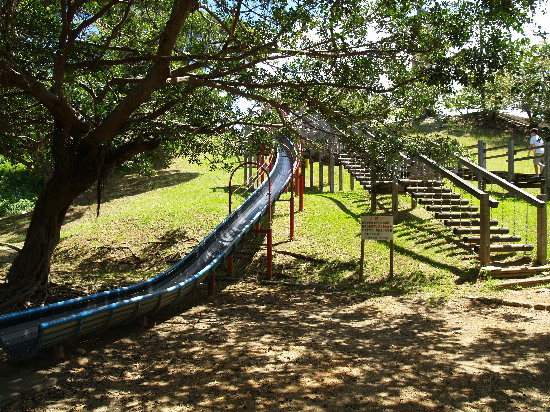 |
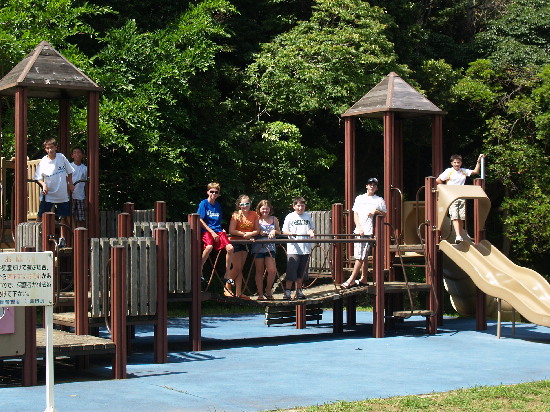 |
 |
|
 |
|
Jet lag was starting to affect everyone so the trick was to keep moving. Gibu Sensei started class out with dantai tsuki/geri which is the usual warmup:
100 chudan tsuki in shiko dachi
50 high/middle/low punches in shiko dachi
50 jodan uke/soto chudan uke/gedan barai in shiko dachi
25 middle level mae geri (each leg)
25 jodan mae geri (each leg)
25 skipping yoko geri (each leg)
100 Shuto uchi
100 hiza geri
Kihon Shodan, nidan, sandan, yondan, godan
Fukyugata shodan, nidan, sandan
Fukyukata ichi (Nagamine Shoshin) Fukyukata dai Ni(Miyagi Chojin)
|
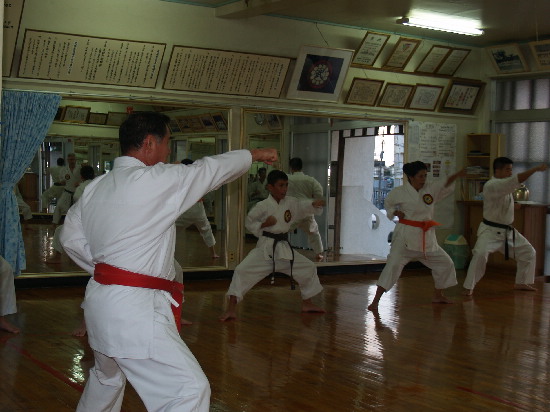 |
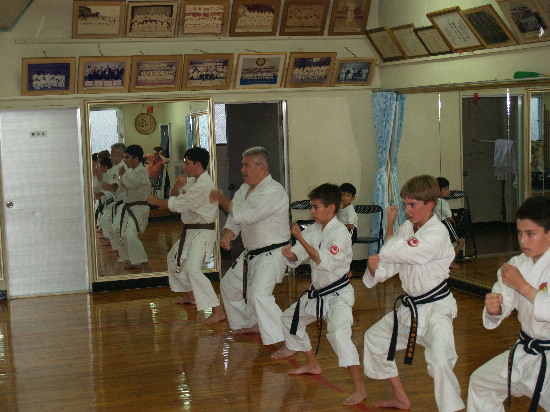 |
|
|
After a short break, he had everyone suit up for kumite and had me serve as the shimpan for each match. We matched the kids up numerous times with different people and Joe, Tyler, Josiah and Kareem all had the honor of sparring with Makoto Gibu Sensei.
Anyone who has had this tremendous opportunity goes into the sparring match with a great deal of apprehension but with incredible appreciation for this encounter. He is one of the most talented hard contact fighters and he is equally effective in defensive techniques as he is at attacking. The beauty of his kumite is that there is a seamless line between the two and they are constantly intertwined. He never receives a technique without countering back with combinations and has something specifically in mind when he starts attacking.
We were all very impressed with one of our dojo moms, Marivi who got out there and did kumite on her first experience on Okinawa. Marivi was on the trip with her two boys and since she was also a beginning student in the dojo, she had the rare opportunity to train a bit while she was there. I had the honor of doing kumite with Gibu Sensei’s young grandson and enjoyed being the punching dummy. As a yellow belt, he possessed a lot of power and seemed to love kumite as his talented uncle.
|
 |
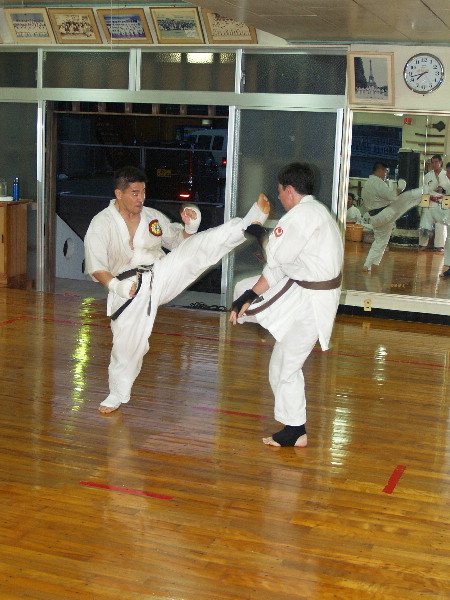 |
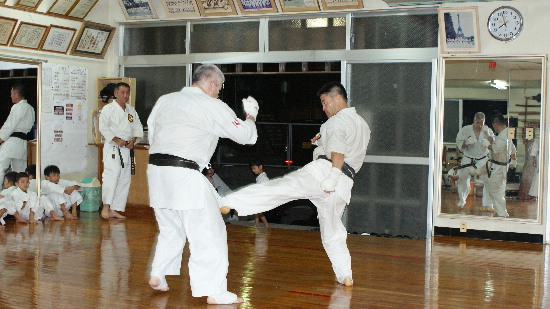
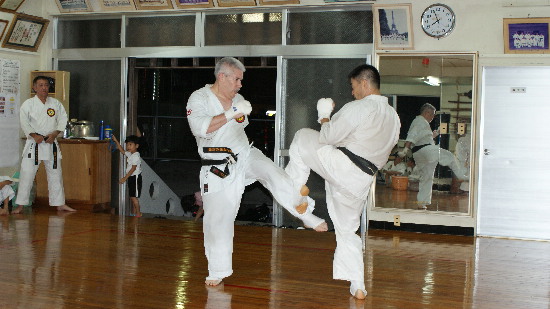
|
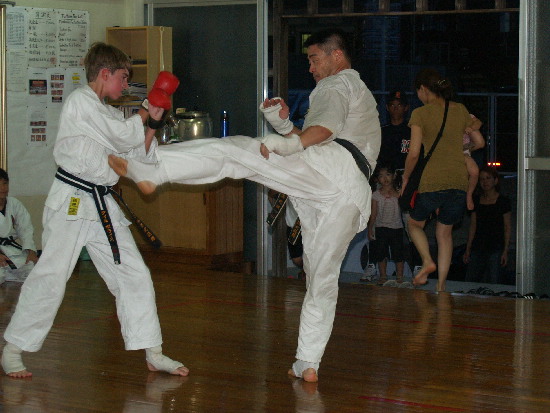 |
 |
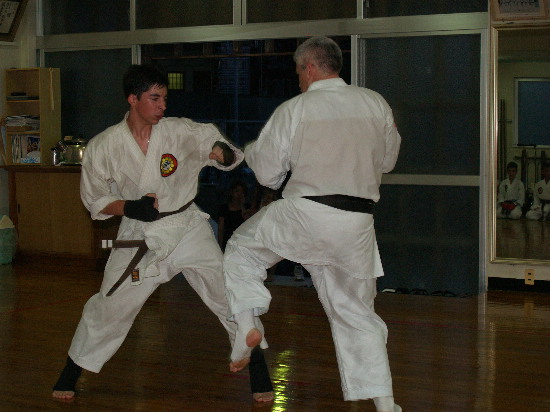 |
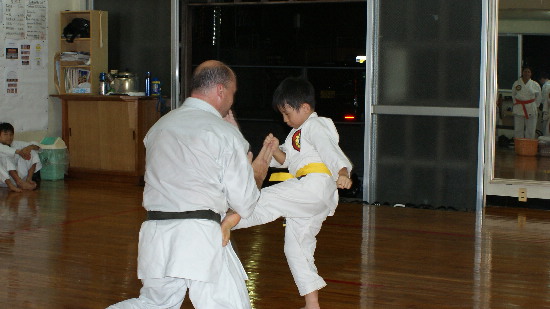 |
|
We all finished the session and watched the young kids practice team kata with Fukyukata ichi and Naihanchi shodan. They were all adorable and seemed to love karate from the start.
After heading back to the hotel, Joe and I met Izumi Sensei at the Lemon Grass restaurant for a quick meal of tebichi and some saba (mackerel). We had a great conversation about dojo history on Okinawa, and various teachers/ students from the Shorinkan and Butokukan.
|
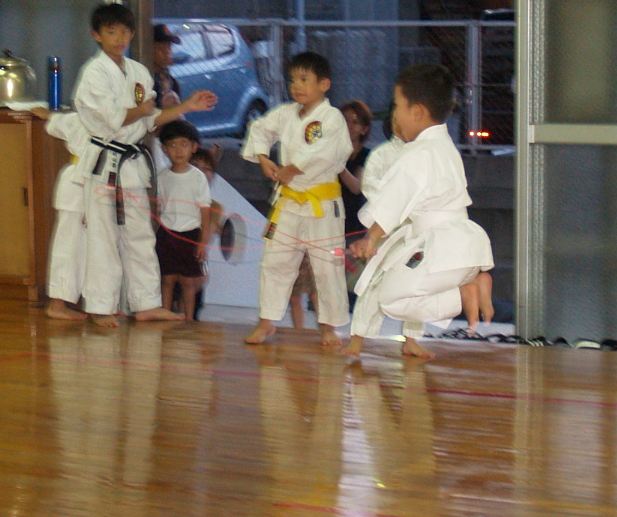 |
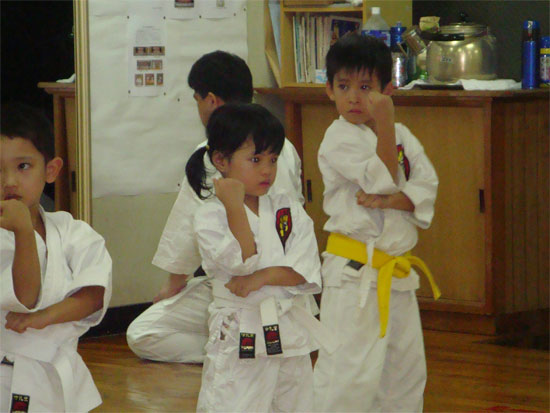 |
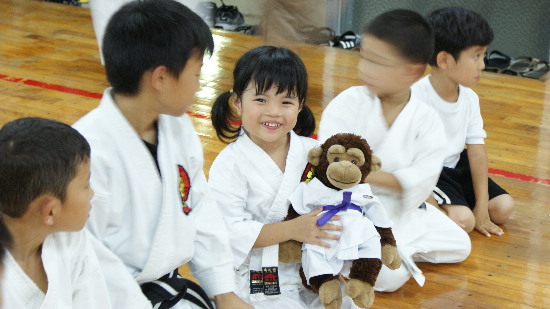 |
|
|
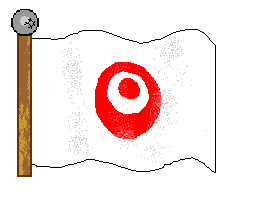 Continue to page 2 Continue to page 2 
|

